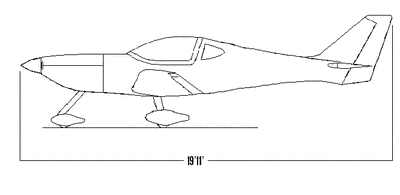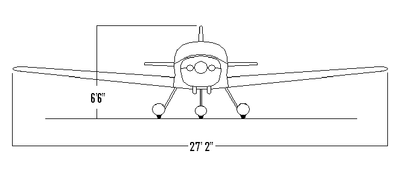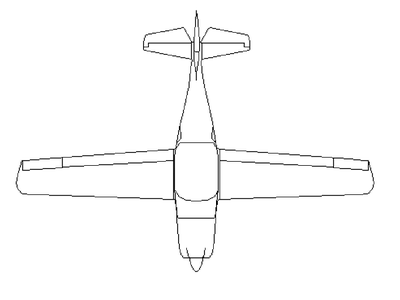Two Lost In VFR Accident
 The NTSB has released
its preliminary report on an accident in Transylvania County, North
Carolina, that claimed the lives of the 63-year-old pilot-builder
of an experimental aircraft and his 59-year-old passenger:
The NTSB has released
its preliminary report on an accident in Transylvania County, North
Carolina, that claimed the lives of the 63-year-old pilot-builder
of an experimental aircraft and his 59-year-old passenger:
NTSB Identification: ERA09LA329
14 CFR Part 91: General Aviation
Accident occurred Monday, June 08, 2009 in Brevard, NC
Aircraft: SORENSON LIGHTNING, registration: N130DS
Injuries: 2 Fatal.
This is preliminary information, subject to change, and may
contain errors. Any errors in this report will be corrected when
the final report has been completed.
On June 8, 2009, about 1640 eastern daylight time, an
experimental amateur-built, Lightning, N130DS, was substantially
damaged when it impacted trees while attempting to land following
loss of engine power at the Transylvania County Airport (22W),
Brevard, North Carolina. The certificated flight instructor and a
private pilot were fatally injured. Visual meteorological
conditions prevailed and no flight plan had been filed for the
instructional flight that was conducted under Title 14 Code of
Federal Regulations Part 91.
The airplane was owned and built by the private pilot, and was
based at 22W.
According to a Federal Aviation Administration (FAA) inspector,
a witness at 22W observed the airplane depart between 1430 and
1500. At 1630, witnesses heard a pilot from airplane contact the
airport's Unicom operator. One witness observed the airplane fly
over the airport from the south, and enter the left downwind leg of
the traffic pattern for runway 9, a 2,950-foot-long, 50-foot-wide,
asphalt runway. The witness stated that the airplane was at the
normal traffic pattern altitude and that the engine sounded normal.
The witness then went indoors and noticed that he did not hear any
further communications from the airplane over the Unicom
frequency.

A witness located in the vicinity of the accident site stated
that he observed the airplane in a left turn. The engine was
"spitting and sputtering" and then quit. The airplane descended
behind some trees, which was followed by a "loud thud."
A witness driving in her car stated that she observed the
airplane make a "very sharp left turn." It then "began to roll left
and right, then it dove straight down into tress and broke apart."
She could not hear any sounds associated with the airplane.
Initial examination of the wreckage revealed that it impacted in
a heavily wooded area, about ¼ of mile from the runway. The
airplane struck an 80-feet tall tree, about mid-span, before coming
to rest inverted. The right wing separated and was located
approximately 15 feet from the tree. The empennage was separated
and remained attached to the airframe via cables. Three pieces of a
propeller blade were located at the accident site. The airplane was
equipped with a Jabiru 3300cc engine, which was impact damaged.

Both the left and right wing fuel tanks were compromised. The
fuel selector was found in the left tank position. Witnesses who
observed the airplane shortly after the accident reported that they
observed fuel leaking from the left wing.
At the time of the accident, the airplane had been operated for
approximately 69.2 total hours.
The flight instructor reported 7,270 hours of total flight
experience, on his most recent application for an FAA second class
medical certificate, which was issued on October 2, 2008.
The private pilot reported 216 hours of total flight experience,
on his most recent application for an FAA third class medical
certificate, which was issued on April 1, 2004.

A weather observation taken at an airport located about 29 miles
southeast of the accident site, at 1653, reported variable winds at
6 knots, gusting to 18 knots, visibility 10 statute miles, ceiling
4,000 feet overcast, temperature 22 degrees Celsius (C), dew point
17 degrees C, altimeter 27.74 inches of mercury.
 Bolen Gives Congress a Rare Thumbs-Up
Bolen Gives Congress a Rare Thumbs-Up The SportPlane Resource Guide RETURNS!!!!
The SportPlane Resource Guide RETURNS!!!! Buying Sprees Continue: Textron eAviation Takes On Amazilia Aerospace
Buying Sprees Continue: Textron eAviation Takes On Amazilia Aerospace Hawker 4000 Bizjets Gain Nav System, Data Link STC
Hawker 4000 Bizjets Gain Nav System, Data Link STC Echodyne Gets BVLOS Waiver for AiRanger Aircraft
Echodyne Gets BVLOS Waiver for AiRanger Aircraft






